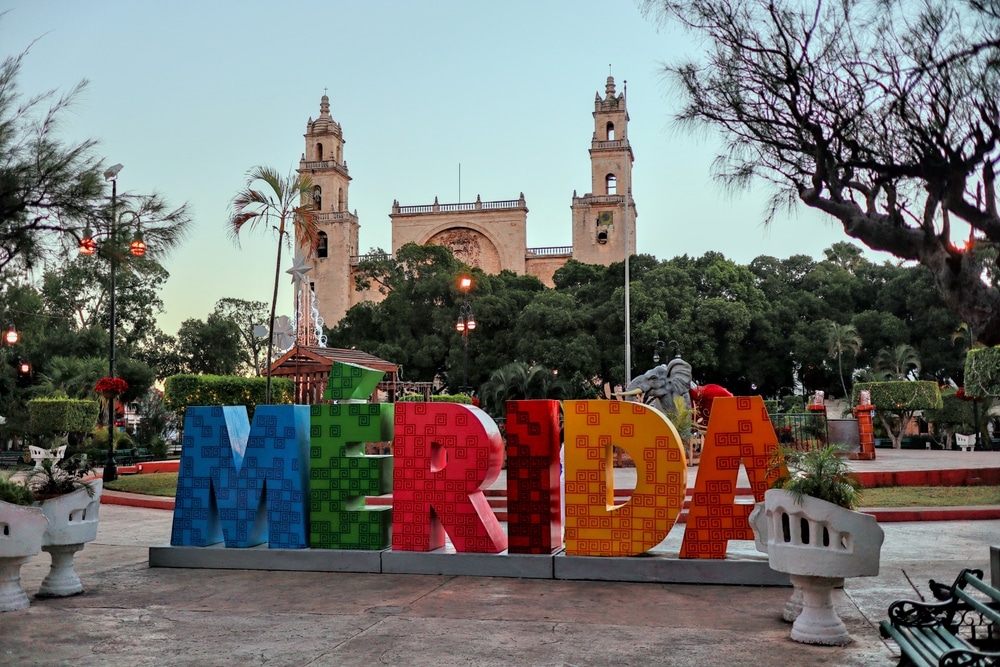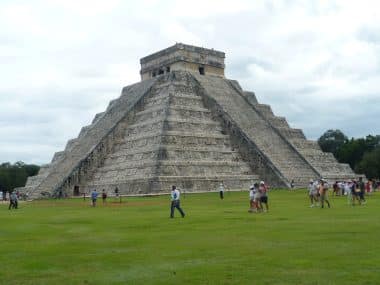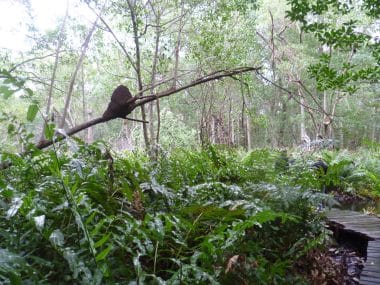
Guest article by Ingrid Müller, ingrids-block.at
Fascinating history, colourful festivals and beautiful architecture: Mérida should be on the itinerary of a trip to Mexico. The colonial-style city is not as well known to tourists as Cancún – so you should not miss this insider tip. So Vámanos! Let’s go to Mexico!
Mérida has a unique cityscape.
The capital of the state of Yucatán was founded back in 1542. Mérida was built on the ruins of the former Mayan city of T ́Hó. The name “White City” has its origin in the frequent use of white limestone in urban construction. Since Mérida is known as one of the safest cities in Mexico, there is nothing wrong with a city walk where you can admire the well-preserved colonial architecture. You can learn more about its history at the Museo de la Ciudad de Mérida (Museum of the City of Mérida). You should definitely see the cathedral of Mérida: San Ildefonso. The church, which is more than forty meters high, consists of parts of a Mayan temple and is one of the oldest cathedrals on the American continent. The Plaza de la Independencia, a well-known public square, is just a few metres away. From here you can admire another imposing building in the city: the pink Palacio Municipal. The town hall is known for its striking clock tower. The Mercado San Benito street market is also noteworthy. With a little haggling, you can pick up the most exotic fruits here at a reasonable price.
Festivals that you have to see.
In February, the “Carnaval de Mérida“ is cheerful and carefree. Here, people dance and celebrate in the streets in magnificent costumes. The whole of Mérida becomes one big party! In addition to the many parades, many special activities for children are also offered. “Hanal Pixán” refers to the Mayan variant of the well-known “Dia de los Muertos” (Day of the Dead). There are various performances such as the re-enactment of a Mayan ball game. A bicycle parade with make-up and costumed residents drives through the city center and old Mayan stories are read aloud. If it’s not too scary for you, you can also take part in a guided, nocturnal cemetery walk. The celebrations around Hanal Pixán begin in the last week of October and last about two weeks.
Excursions
Chichen Itza

Every year, about two million visitors visit the most famous excavation site of the Mayan culture: Chichen Itza. The UNESCO World Heritage Site is one of the seven new wonders of the world. The large step pyramid is dedicated to the feathered serpent god Kukulcán. At the equinox, thousands of tourists flock to the 30-meter-high pyramid to see a special phenomenon: a shadow in the shape of a snake seems to snake down the stairs. For the Maya, this was a sign: Kukulcán had arrived. Near the pyramid you will find the large ball court, among other buildings. The ball, which weighs a kilo, only had to be manoeuvred through a stone ring with the hip, elbow or shoulder. A little further away is the Cenote Sagrado. Various rituals were performed in this sacred place. To honour the water god, gold, jewellery and ceramics were thrown into the water of the sink cave.
Celestún

The tranquil fishing village of Celestún has just 7000 inhabitants. Nevertheless, the gem on the Gulf of Mexico is worth a visit. The Ria Celestún Biosphere Reserve is home to more than a thousand exotic animal species. On a boat trip through the mangrove landscape, you can see flamingos or discover an ocelot or jaguar roaming around. Turtles feel at home in the reserve, as does the endangered Geoffroy’s spider monkey. However, you should keep your hands and feet in the boat during the trip: this is also the home of bubonic crocodiles and pointed crocodiles. In Celestún you can also be present at the harvest of sea salt . Fleur de sel has been harvested here for more than 1000 years. Nearby is the Palmar Lighthouse, which is one of the tallest lighthouses in Mexico at 39 meters. Celestún also makes the heart of fish lovers beat faster with its many restaurants.
Arrival and best time to travel to Mérida.
The Mexican city has its own airport and also a well-developed public transport network. If you prefer a rental car, renting from all major providers is possible without any problems. Mérida is best visited in the summer months from April to November. During this time, daytime temperatures will be between 20 and 35 degrees Celsius. In contrast to the winter months, there is almost no precipitation during this period.
Sources:

